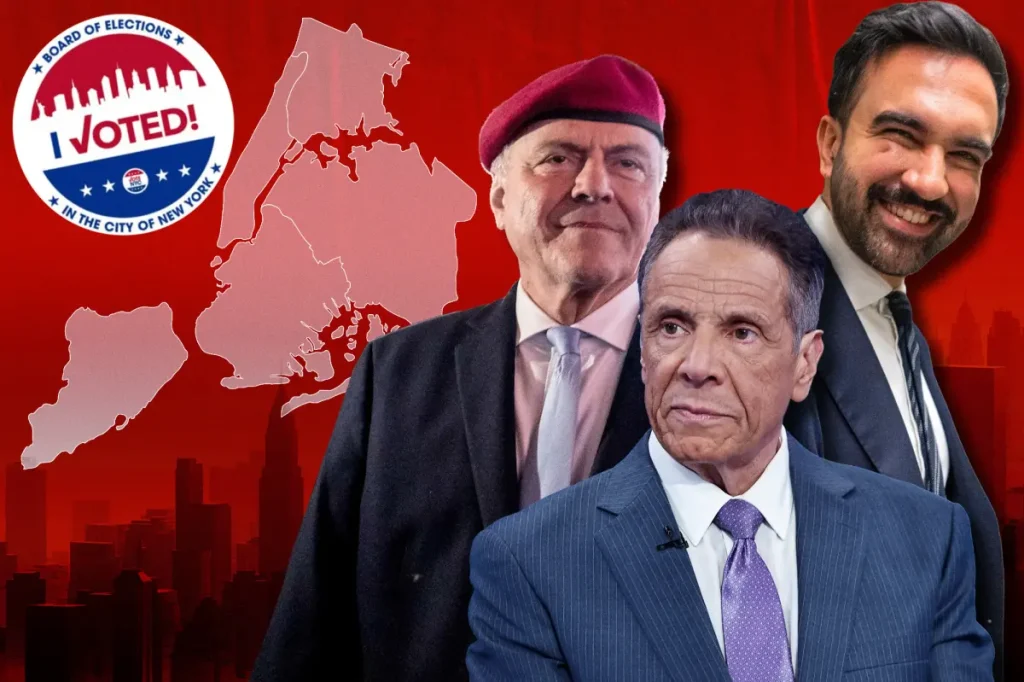New York City’s Historic Mayoral Race Draws Record Turnout
In a historic mayoral race that has captivated New York City, voters turned out in record numbers to choose between three distinctive candidates: Democratic socialist Zohran Mamdani, former three-term Governor Andrew Cuomo running as an independent, and persistent Republican Curtis Sliwa. The election has become a defining moment for the city, with more than 1.7 million voters casting their ballots—a level of participation not seen since the 1993 mayoral race. By Election Day evening, officials had counted 1.01 million Election Day votes, 732,000 early votes, and 124,000 mail-in ballots, demonstrating New Yorkers’ exceptional engagement with this consequential contest. This remarkable turnout represents a dramatic increase from the 2021 mayoral election, which saw only 1.1 million total votes cast in the race between Eric Adams and Curtis Sliwa.
The unprecedented turnout reflects the high stakes and stark contrasts between the candidates. Mamdani, as the Democratic candidate with socialist principles, represents a progressive vision for New York’s future, potentially appealing to the city’s younger voters and its substantial Democratic base. Cuomo, leveraging his experience as governor but running without party backing, has positioned himself as a pragmatic alternative for moderates and independents dissatisfied with party-line options. Sliwa, the Republican candidate known for founding the Guardian Angels civilian patrol group, has maintained his campaign despite challenging odds in a predominantly Democratic city. This three-way race has energized voters across the political spectrum, with each candidate drawing support from different demographic and ideological segments of the city’s diverse population.
The election’s significance extends beyond the candidates themselves, revealing important shifts in New York City’s political landscape. While registered Democrats significantly outnumber Republicans in the city—comprising 65% of the 5.1 million registered voters compared to Republicans’ 11%—the substantial bloc of 1.1 million unaffiliated voters has become a crucial battleground. Political analysts suggest that a surge in independent and Republican voter turnout could benefit Cuomo, who has sought to position himself as a centrist alternative. Conversely, increased participation among younger voters would likely strengthen Mamdani’s chances, given his appeal to progressive and first-time voters who are energized by his platform of economic justice and systemic change.
Pre-election polls painted a complex picture of the race, with Mamdani generally leading but by vastly different margins depending on the survey. Some polls showed him with a commanding 25-point advantage, while others suggested a much tighter contest with Cuomo trailing by just 4 percentage points. This wide variance in polling predictions added another layer of tension to an already dramatic election, making the actual voter turnout all the more critical in determining the final outcome. The uncertainty has kept all three campaigns working intensely until the final hours, with each candidate making last-minute appeals to undecided voters and focusing on getting their supporters to the polls.
This mayoral race stands out not only for its high participation but also for its historical context in New York City’s governance. The 1993 election that saw similar turnout numbers resulted in Rudy Giuliani’s victory, marking a significant shift in city leadership. Similarly, the 2001 election that drew approximately 1.5 million voters came in the aftermath of the September 11 terrorist attacks and led to Michael Bloomberg’s first term. The current election carries comparable weight, occurring amid ongoing economic challenges, housing crises, and public safety concerns that have dominated public discourse. The winner will face the immense responsibility of guiding America’s largest city through complex urban issues while attempting to bridge political divides that have intensified in recent years.
The extraordinary level of civic participation in this election reflects both the polarized nature of contemporary politics and the genuine belief among New Yorkers that their vote matters in determining the city’s future. From Staten Island to the Bronx, from historically low-turnout neighborhoods to politically active districts, polling stations reported steady streams of voters throughout Election Day. Community organizations, candidate volunteers, and good-government groups conducted extensive get-out-the-vote operations, helping to overcome typical barriers to participation. This grassroots mobilization, combined with the distinct visions presented by the three candidates, has transformed what could have been a routine municipal election into a referendum on New York City’s identity and priorities. As officials continue counting votes into the night, one outcome is already certain: New Yorkers have demonstrated their commitment to democratic participation at a level not seen in decades, setting a powerful example of civic engagement during a time of political polarization nationwide.


